Nearing the end of WWII, two ground crew men from the Soviet Union looked at a newly-received container of rapid firing submachine guns and devised a plan to provide rapid firepower to the bottom of a bomber. It was initially a smart thought, but in the end it was highly flawed. This idea became remembered as the “Fire Hedgehog”.
The Hedgehog’s main ingredient was the Pistolet Pulemjot Schpagina model from 1941, also known as just PPSh-41. A Soviet guru named Georgii S. Shpagin was responsible for the very basic design. It was a short 33-inch (828mm) long blowback-operated, fully automatic submachine gun coupled with a 10-inch (265mm) chrome-lined barrel inside a wooden stock.
The gun weighed 12 pounds (5.4 kg) when it was loaded with a 71-round drum magazine. When loaded with a more reliable 35-round box magazine it only weighed about 9.5 pounds.
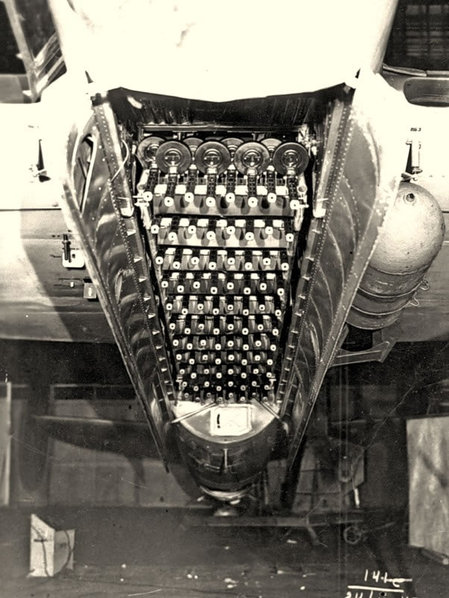
The Soviets manufactured more than 6 million; they are still actively used today in hotspots all over the world, even over seven decades after their introduction. This gun can fire the same round as the Soviet Torkarev pistol, the 7.62x25mm cartridge, at a rapid 900-rounds per minute. That is almost two times as fast as other submachine guns from that era.
If you are not familiar with it, the 7.62x25mm Tokarev is comparable to the .38 Super. Commercial loads usually top out at about 570 ft/lbs of force (similar to a standard power .44 Mag) out of a handgun and a bit more out of the longer PPSh’s barrel. It is likely that the most destructive round fired from the PPSh was the Soviet P-41 loading.
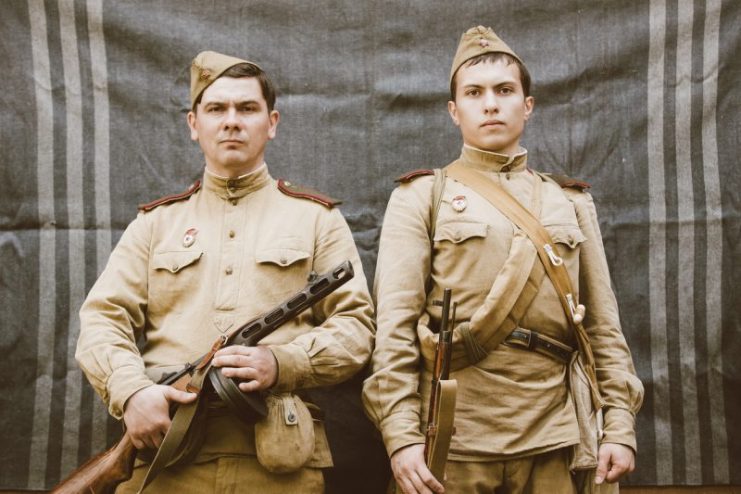
It was a very hot 74-grain, steel-cored, flammable variant that could rip through mild armor. Furthermore, it could set fire to whatever was inside.
The Tupolev Tu-2 was used by the Soviet Air Force as an effective light bomber and a high altitude fighter. The famous Andrei Tuploev designed it while operating out of one of Stalin’s gulags. There were only 2,200 manufactured from 1941-1948. That is a small number compared to the 5,800 of the B-26 Marauder – the closest American-made plane produced during the same timeframe.
It was rugged and a breeze to fly. Equipped with a twin engine, long sleek lines, and a 61-foot wingspan, the Tu-2 was so reliable it was used in Third world countries until 1982. It was also built with an armored plate along the belly of the aircraft to protect against gunfire from the ground while being used for strafing enemy troops. All four crewmen (or crewwomen, since the Soviets had 9 combat squadrons flown by female crews only) sat in seats that were armored for added protection.
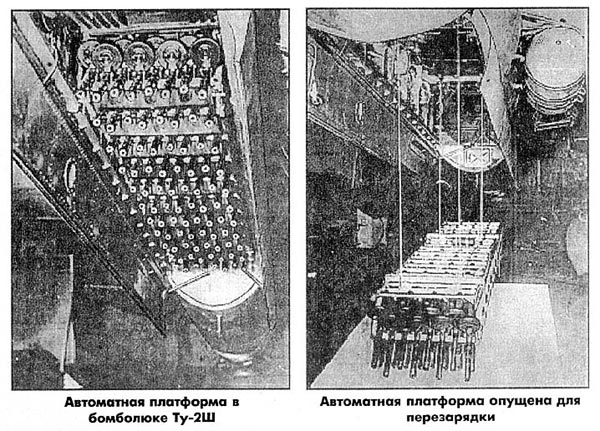
It was an effective aircraft that had a high survival rate. During shturmovic (ground-attacks) the aircraft could carry bombs, and had two forward machine guns with the capability of shooting 20 mm rounds and three rear machine guns firing 7.62x54Rmm. The Tu-2 was an incredible plane, plain and simple, but fitted with PPSh submachine guns to its belly, it was entirely different.
Chief A.V. Nadashkevich and lead engineer S. Saveliev were Soviet ground personnel. They formulated an idea in 1944 to add a removable cassette containing a bunch of submachine guns to the bottom of the Tu-2.
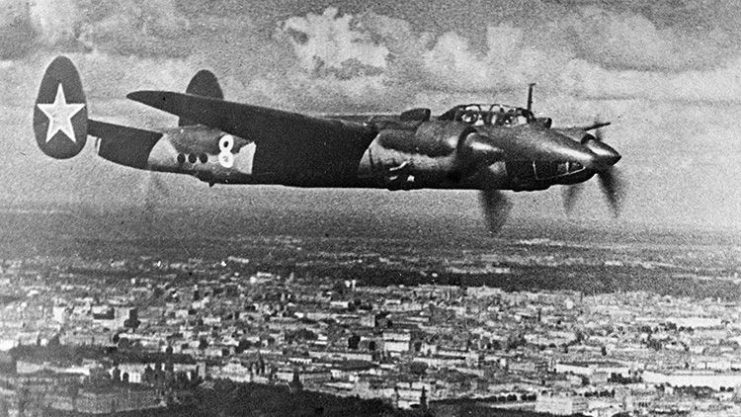
The Tupolev had a bomb bay (for up to 3300-pounds of bombs) and had the ability to carry an additional 5,000 pounds in under-wing hard points. This bomb bay was picked to accept a wooden skid that contained 48 and 88 PPSh-41 submachine guns. They were positioned to fire downward. Arranged in 11 rows of 8 guns each, the entire arsenal could be set up in the workshop before being raised into the bomb bay of the plane with ropes. The cockpit was equipped with a special sight to allow the pilot to accurately line up the target. Once he depressed the solenoid it fired all 88 of the submachine guns simultaneously.
It is unclear who is responsible for the name, but throughout history it is called the Fire Hedgehog. There was only one experimental plane that carried it – the Tu-2Sh.
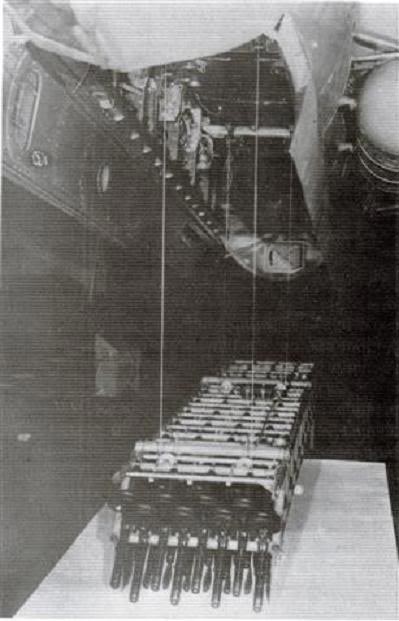
Each submachine guns could fire 900 rounds per minute, which in theory meant the array could fire 79,200 rounds per minute. That is a serious amount of firepower to combat when 1,320 rounds per second come flying your way. However, each of the mounted submachine guns had only a 71-round drum magazine, which allowed just over 4 seconds of fire.
The Tu-2Sh could unload these 6 thousand rounds with a maximum speed of about 250 miles per hour. All those rounds could be disseminated over a space of about 1800 feet long and about 4 feet wide. It was highly likely that you were going to hit anything inside the kill box.
Therefore, it was felt that a German train would be the best target. It could strafe the entire length of one from engine to caboose. In just seconds it could obliterate the whole train.
Limitations
This was a novel concept, but theory does not always translate into a perfect reality. Loading the 88 drum magazines required tons of man power; 100 man hours to be more precise.
Once it was employed, pilot and flight crew would have thousands of spent brass cases spewing everywhere; there was potential for the cases to get into the plane’s engine or to create jams in the other guns. Additionally, the plane had to fly below 800 feet to be within the appropriate range to deploy the guns, but that was highly dangerous; well within the range of just about every weapon the Germans had in their arsenal. That last detail was the main issue that deterred use.
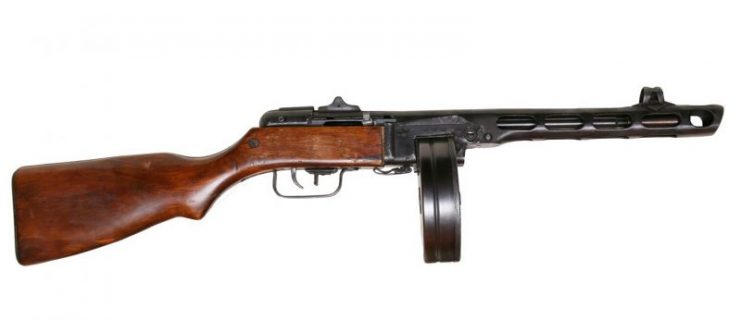
Failure to launch
The problems outweighed the perks, so the Tu-2Sh never had the chance to fly in combat. That does not detract from the brilliance of the idea. Who knew the Russians could be so innovative.
Perhaps it went down like this: “Hey, Andrei, what do you think would happen if we took 88 of these here burp guns and tied them to the bottom of that there plane over there?” Sergei rubs his beard and says, “Hell yeah. We’d better get on that.”